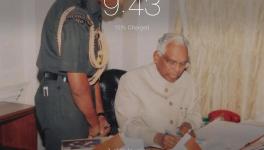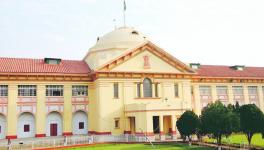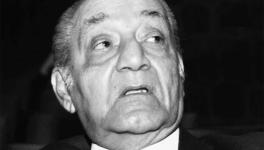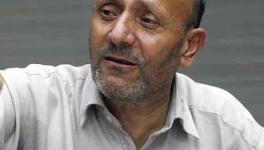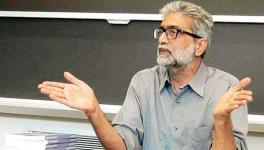NIA Says Kashmiri Media Equally Responsible For Present Situation in Valley

Image Courtesy: Kashmir News Service
In the chargesheet filed against Kamran Yusuf, a Kashmiri photojournalist arrested on charges of stone pelting and inciting violence, the National Investigation Agency (NIA) has said that the media in Kashmir is equally responsible for the ongoing troubles in the valley.
Describing a video shot by Yusuf which was uploaded on Greater Kashmir’s website, NIA said in the chargesheet, “Media responsible for uploading such videos also seem not playing their role in peace, prosperity and communal harmony in the valley and by uploading such videos they may be favourite locally, but they also are equally responsible for cause of the present situation in the valley, which if felt appropriate, NIA should communicate to PCI.”
Prominent Kashmiri human rights activist, Khurram Parvez, told Newsclick, “From the perspective of human rights, the Kashmiri media has done exemplary work as compared to the media in Delhi. Media in Delhi has been responsible for inciting violence on Kashmiris, has also been responsible for legitimising violence, and maligning Kashmiris. The Kashmiri media hasn't done what Delhi media has. So the NIA actually, in other words, is saying that Kashmir media has not followed the line depicted by the government of India.”
Yusuf was arrested in September last year, and proceedings for his application for bail are ongoing in the NIA Special Court in Delhi. As evidence, the NIA has declared the presence of Yusuf at various stone pelting and protest sites to be grounds for his detention. This was met with uproar by journalist organisations based in Kashmir, as well as international journalist groups, who said that Yusuf’s actions fall in the line of duty of his profession as a photojournalist.
“This statement shows the whole political tilt to this case and the way the investigation has undergone. The NIA does not have the kind of expertise to pass such kind of judgement on who is a good media person or what media should actually be like. So this is a more brazen and ugly form of how media in Kashmir is being bothered. It has already been done for a long time,” Anuradha Bhasin, executive editor of Kashmir Times, told Newsclick.
In the chargesheet, the NIA has also defined the role of a journalist. They have written that the moral duties of a journalist include covering developmental activities performed by the government, and since Yusuf only covered protests and stone pelting, he is anti-national and not a real journalist.
The evidence presented against Yusuf is weak, causing many to comment that this is a politically motivated case meant to intimidate journalists in Kashmir.
“If you hear the local police, they will tell you, they feel very uncomfortable with photojournalists covering protests. They say that immediately after the photo/video journalist comes there, it boosts the morale of the protesters. That is the reason why they wanted to create an example, so other journalists actually distance themselves from protests. Kamran is, unfortunately, a victim of this. They wanted self-censorship to emerge as a consequence of what happened to Kamran. Honestly speaking, we think that if it was not Kamran, it would have been someone else,” Parvez added.
The next hearing in Yusuf’s case is on February 21, and the final bail order is likely to be passed.
Get the latest reports & analysis with people's perspective on Protests, movements & deep analytical videos, discussions of the current affairs in your Telegram app. Subscribe to NewsClick's Telegram channel & get Real-Time updates on stories, as they get published on our website.










